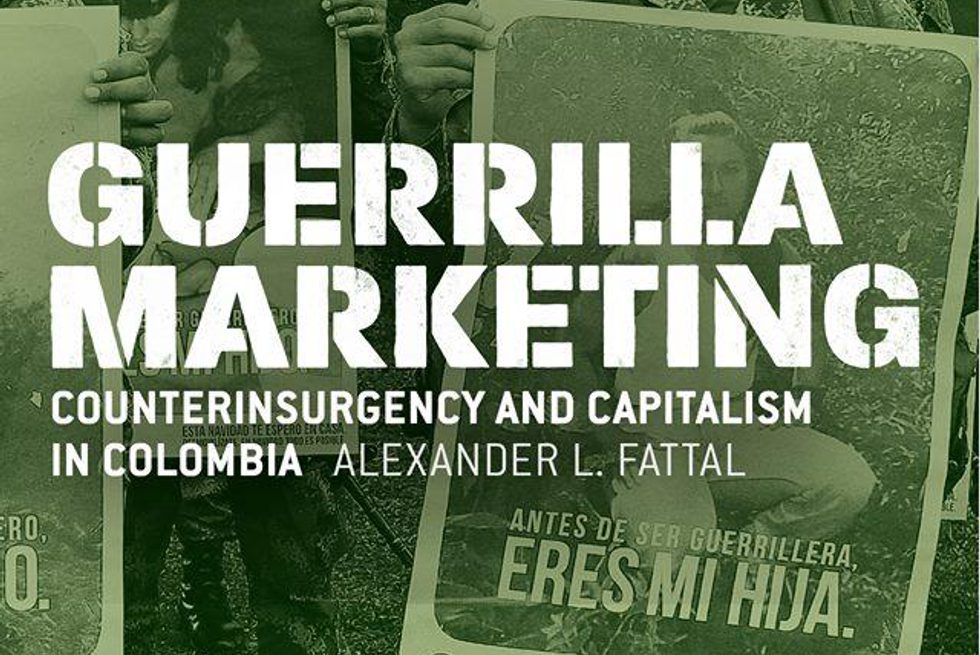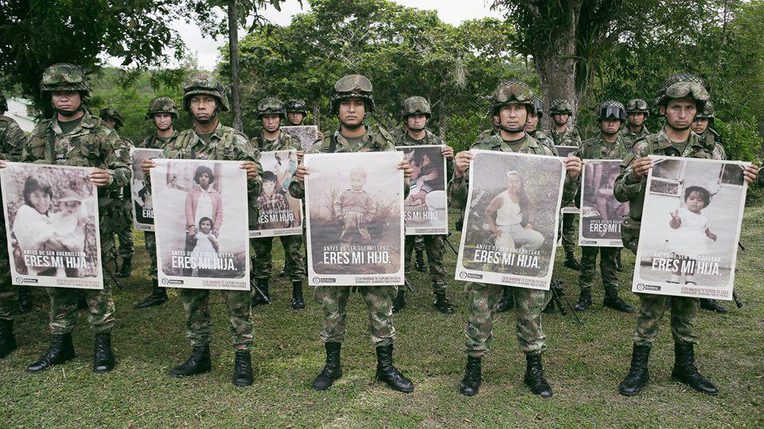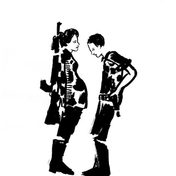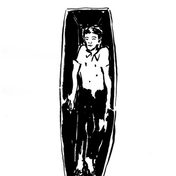
In the wake of Colombia's peace process after the longest civil war in the Western Hemisphere, somewhere in that "liminal space that is not quite war nor peace" (Fattal 2018, 245), Alexander L. Fattal's recently published Guerrilla Marketing (University of Chicago Press, 2018) becomes a timely ethnography that radically alters our understanding of the Colombian armed conflict, as well as how warfare is waged in the contemporary world. Fattal describes how FARC Marxist guerrillas are turned consumers of media; as images and affects become the unruly forces that effectively penetrate Colombia's so-called impossible geographies. Marketing and "brand warfare" become the weapons of choice adjoined by "soft" coercion counterinsurgency techniques (154).
Guerrilla Marketing centers on the Colombian Ministry of Defense's Program for Humanitarian Attention to the Demobilized (PAHD) and its alliance with the multinational marketing firm Lowe/SSP3. Through these collaborations which Fattal carefully elucidates, we come to see how images and multimedia constellations spring forth in venomous ways. Venomous because they numb, the images become "cultural anesthetics" (see Feldman 1994) that flatten out the horrors waged by the Colombian state (and the paramilitaries) and the broader realities of "the armed conflict" under the font of humanist rhetoric. But venomous also because they attempt to wane the guerilla soldier's combat force slowly. They do so by encroaching on the intimate life of the guerilla soldiers; their desires and kin relations. Affect as "infrastructure" is weaponized (14).

The child portraits of combatants become posters (x). The text reads, "You are my child." The impersonal voice of the state is the ventriloquist, becoming someone's voice projected out of someone's body and thus morphing into someone's mother, an all-encompassing metamorphosis that harps on the figure of the mother, on the yearnings for a return to domesticity, and the phantasmagorias of easily repairable nuclear family relations simply awaiting the combatant's return.
Through a variety of examples and strategies Fattal demonstrates how "brand warfare" as widely diffused turns atmospheric, implicitly shaping the course of action (as the impact micro-targeting advertisements on the Colombian 2016 plebiscite have also come to show). We are thus told that guerrilla marketing is "camouflage" (15); tapping into its milieu in order to transform perceptions and reconfigure how future horizons come to be imagined for combatants and other civilians alike.
Yet branding as a warfare strategy is not the only chameleon-like force in the ethnography. It is Fattal himself that, much like media warfare, mystically seeps into various spheres: the front lines of militarized intervention; the worlds of children fleeing the war at the edge of the city; basements in Sweden where he comes to lounge with FARC sympathizers; the peace process talks in La Havana; the lifeworlds of FARC's demobilized in the capital city; and the offices of high ranked officials and elite marketing firms. Needless to say, Fattal's tentacular reach as an ethnographer is a thing of wonder. Yet to say that his approach is one that "studies up" would be an understatement. Guerrilla Marketing as an ethnographic study is not simply one of the unimagined vertical leaps into the worlds of the highly professional, but instead it is a work compiled by rhizomatic maneuvers in disparate, multi-dimensional folds, illustrating not just access to multiple kinds of actors in Colombia's armed conflict from various scales—but the slow weaving of depth and breadth, the rapport and intimacy that could only be built out of the work of time.
From such careful and patient engagements, we come to understand, for example, how the "peace process" by its very inherent logic is fraught with the continuation of violence and the aporetic situations demobilized combatants find themselves in. Take for instance how amid the three-step process of disarmament, demobilization, and reintegration (197), ex-combatants have to navigate strategies of manipulation where soft coercion is implemented to get them to confess and provide intelligence for further attacks against their former soldiers. Once "reintegrated" (into what exactly?), they find themselves exchanging one "war for another" (196), as the "jungle of cement" at the city's limits is clouded with the potential for violence due to their betrayals and the entrance unto a world policed by organized crime in the ollas (drug-dealing markets), the constant possibility for remobilization with the ongoing recruitment of paramilitary groups, and economic insecurity in a deeply stratified society.
Thereby, Guerrilla Marketing also contributes to our understanding of the urbanization of the Colombian armed conflict and exposes how alleged spaces for rehabilitation and insulation from trauma and violence are places where warfare is prolonged. The halfway houses the ex-combatants must live in become "dens of intelligence and counterintelligence" (150–51) as officials extract key information out of "voluntary" interviews (139). FARC infiltrators, on the other hand, intern in disguise to report or threaten potential betrayers. These are practices of infiltration in the space of rehabilitation that I grew familiar with during my own fieldwork in Bogotá, as members of organized crime from the ollas would infiltrate drug rehabilitation centers to intimidate others and query about the whereabouts of people they were looking for. Let us consider then, el patio (rehabilitation center) as another kind of battleground.
Finally, the book's form deserves some comments. The book is structured around a set of life histories that interlude each chapter. These personal accounts plunge the reader into some beyond outside the limits of the book's general scope. The contours, swirls, and momentum of narrative—that is, the immanence of life as told—break open other folds, pointing toward the incommensurate depths of experience for ex-guerrilla combatants and the unstable terrain that the present carries. This generative excess affirms that Fattal still has other stories to tell, to reckon with, and to explore through other expressive conduits that lie outside this project's general themes. Thus, we may consider his surrealist ethnographic film Limbo as precisely an annexed project that grows from these concerns.
This book forum invites four anthropologists who specialize in questions of media, contemporary militarism, or violence to reflect on the problems and insights Guerilla Marketing presents.
References
Feldman, Allen. 1994. "From Desert Storm to Rodney King via ex-Yugoslavia on Cultural Anaesthesia." In The Senses Still: Perception and Memory as Material Culture in Modernity, edited by C. Nadia Seremetakis, 87–108. Chicago: University of Chicago Press.
Posts in This Series

Branding's Proliferation
Good ethnography is a provocation. It pushes us, of course, to think more deeply and more critically about its chosen subject. But good ethnography also raises ... More

Brand Yourself!
In 2011, the Colombian Ministry of Defense partnered with a prominent Colombian consumer marketing firm to plan its second annual Christmas campaign. It was an ... More

False Wars
Colombia’s more than half a century of war has produced no shortage of accounts and analysis, yet Alexander L. Fattal’s Guerrilla Marketing (University of Chica... More

Marketing for Militarism
Alexander L. Fattal’s Guerrilla Marketing (University of Chicago Press, 2018) is a rich study of the ways in which the Colombian military utilizes advertising a... More